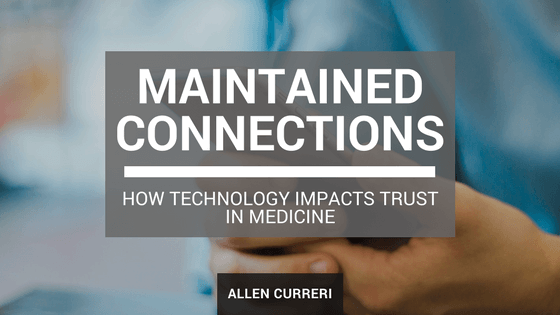Put yourself in the shoes of a single mother. Every morning, she wakes up early to fix her two young boys breakfast before dropping them off at school and heading off to work herself. But one morning, she finds herself woken much earlier than earlier by her own hacking coughs; the headache and scratchy throat she assumed were due to a bad bout of allergies have morphed into a full-blown illness. What does she do? She can’t afford to call out of work for a formal doctor’s appointment, and she knows that she’ll miss the walk-in hours at her local clinic in the time it takes to drive her boys to school. Traditional avenues of quick medical care are closed to her – but newer, electronic means of medicine may not be.
Today, skyrocketing healthcare costs and the increasing availability of healthcare technology has made telemedicine a practical and affordable alternative to in-person clinical visits. According to statistics provided by IHS Technology, the number of patients enrolled in telemedicine plans will rise to roughly 7.1 million in 2018 – in increase of over 6.5 million users since IHS’s last survey in 2013. Telemedicine is flourishing, and has good reason to do so. The draws of remote medical care are inarguable; patients are no longer confined to strict office hours or short in-person conversations. Moreover, some studies have found that e-medicine avenues of communication are more conducive to information-sharing than traditional in-person visits, as patients have more time to compile their thoughts and are less worried about taking up a doctor’s time. In some cases, the lack of personal contact may even enable patients with anxiety to share personal details they might have otherwise left out.
These benefits come at a cost, however. While telemedicine’s lack of in-person contact can be useful for those without the time or ability to travel to medical offices, the distance it facilitates can both limit the doctor’s ability to diagnose and harm the relationship between physician and patient. Telemedical check-ins are remote by default. Thus, they deprive doctors of their ability to touch and smell the patient during an appointment. This, as Edward Allen Miller puts it in a literature review on telemedicine, “compromises a physician’s ability to make diagnoses, while lowering [patient] confidence in the diagnoses made.” This, Miller goes on to note, can ultimately lessen patient adherence to treatment plans and thereby lower recovery rates. Technology unavoidably lends itself to detachment and lessens the doctor’s ability to empathize with their patients. When a patient’s personality and condition is reduced to a statistic block and a few notes, finding subtle cues to indicate a patient’s emotional state is nearly impossible, whereas dashing off a diagnosis and treatment plan via email is simple. However, this kind of bare-bones response has the potential to make patients feel distrustful, or cause them to think that their doctors don’t care about their individual cases.
So, where does this leave us? Is telemedicine the convenient future of medicine, or a half-hearted substitute for in-person care? I would argue neither; provided that it doesn’t completely replace in-person visits, technology has a place in our medical milieu. However, telemedicine will only succeed if it is implemented in way that preserves trust and fosters a real relationship between a physician and patient. According to a 2006 study on telemedicine efficacy in Norway, patients who used e-medicine needed their physicians to listen, provide feedback, and convey a full understanding of their emotional distress to maintain their trust in the doctor’s medical advice. In other words, patients needed their doctors to actively empathize in their electronic communications. Given that empathy is difficult to foster without in-person contact, I would argue that telemedicine can only be integrated when the patient already has a strong relationship with their physician and the pair have agreed on set expectations for their online communications. For patients like the single mother described in the opening scenario, telemedicine could serve as an invaluable care option and alleviate considerable inconvenience. As we begin to integrate telemedicine into our day-to-day practice, though, we need to ensure that we preserve medical empathy rather than lose it in pursuit of convenience.


